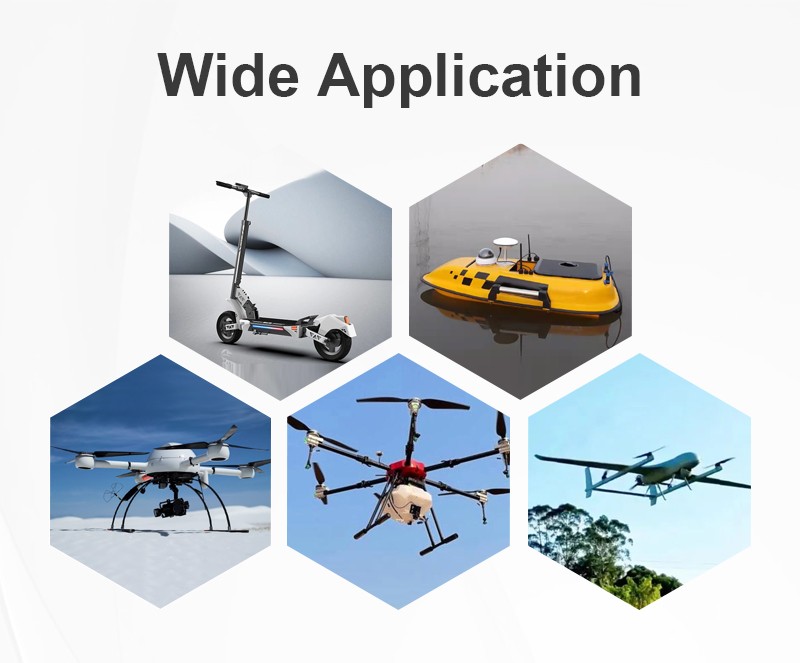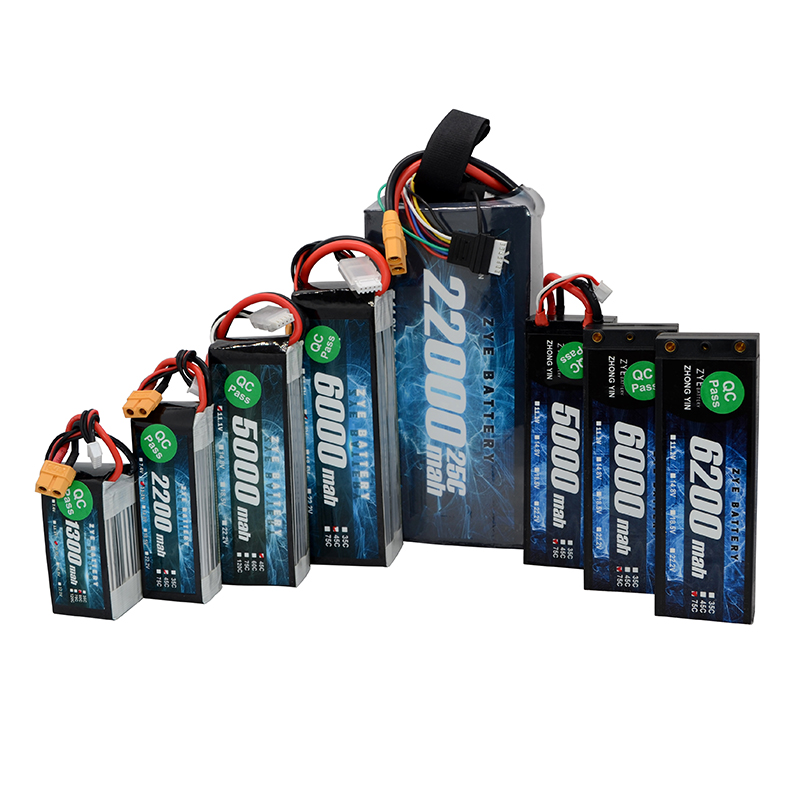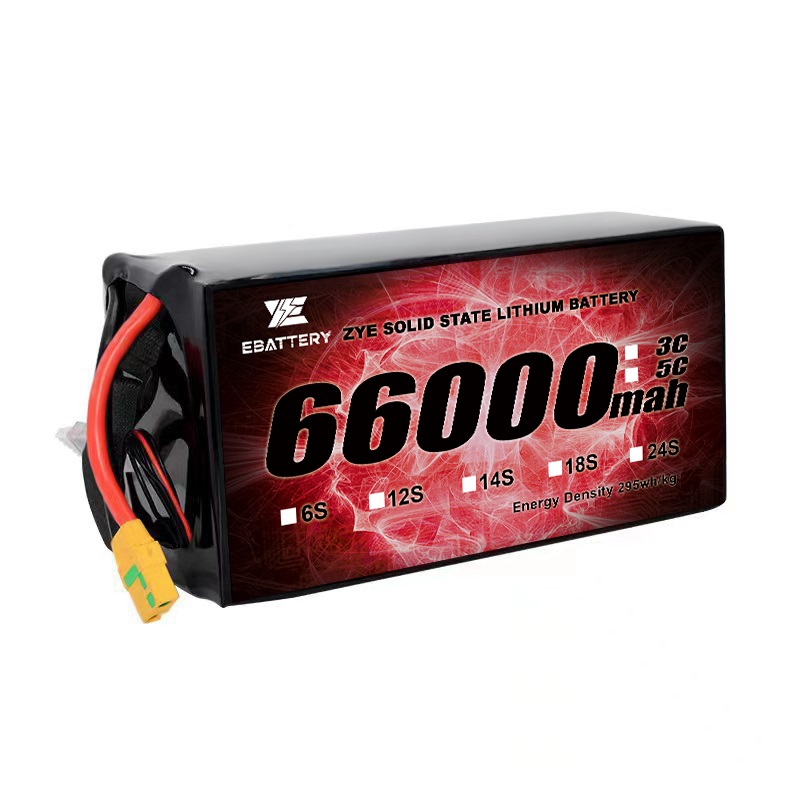14s vs 12s Lipo: When to Choose Higher Voltage?
2025-05-12
In the realm of high-performance electric systems, the choice between 12s and 14s LiPo batteries can significantly impact your project's success. This comprehensive guide delves into the nuances of these power sources, helping you make an informed decision for your specific needs.
Performance comparison: 14s (52V) vs 12s (44V) lipo systems
When comparing 14s and 12s LiPo systems, voltage is the primary differentiator. A 14s LiPo battery provides a nominal voltage of 51.8V (14 x 3.7V), while a 12s configuration offers 44.4V (12 x 3.7V). This voltage disparity leads to several performance differences:
Power Output: The higher voltage of 14s systems typically translates to increased power output. This can be particularly advantageous in applications requiring rapid acceleration or high torque, such as electric skateboards or high-performance drones.
Speed and Acceleration: In many electric vehicle applications, 14s systems can provide superior top speeds and quicker acceleration compared to their 12s counterparts. This is due to the relationship between voltage and motor RPM, where higher voltage generally results in higher motor speeds.
Efficiency: 14s systems often demonstrate improved efficiency, especially at higher power levels. The higher voltage allows for lower current draw for the same power output, potentially reducing heat generation and energy losses in the electrical system.
Range: While the total energy content (measured in watt-hours) may be similar between equivalent 14s and 12s batteries, the improved efficiency of 14s systems can sometimes translate to extended range in practical applications.
Weight and efficiency trade-offs between 14s and 12s lipo
The decision between 14s and 12s LiPo batteries involves careful consideration of weight and efficiency trade-offs:
Battery Weight
A 14s battery typically weighs more than a 12s battery of equivalent capacity (in amp-hours). This weight difference, while often minimal, can be crucial in weight-sensitive applications like drones or lightweight electric vehicles.
System Complexity
14s systems may require more complex battery management systems (BMS) and chargers due to the higher cell count. This can add slightly to the overall system weight and complexity.
Heat Generation
The higher efficiency of 14s LiPo battery systems can lead to reduced heat generation in both the battery and the electronic speed controller (ESC). This can be particularly beneficial in high-power applications or environments where thermal management is challenging.
Power Density
14s configurations often offer superior power density, delivering more power per unit of weight. This can be advantageous in applications where maximizing power output within weight constraints is critical.

Application guide: Choosing between 14s and 12s for your project
Selecting between 14s and 12s LiPo batteries depends largely on your specific application and priorities. Here's a guide to help you choose:
Choose 14s for:
1. High-performance electric skateboards or e-bikes seeking maximum speed and acceleration
2. Large drones or UAVs requiring high power output and extended flight times
3. Electric vehicles prioritizing top speed and quick acceleration
4. Applications where efficiency and heat management are critical
5. Projects with ample space for larger battery packs
Choose 12s for:
1. Weight-sensitive applications like racing drones or ultralight electric vehicles
2. Projects with stringent size constraints
3. Applications where the additional complexity of a 14s system isn't justified by performance gains
4. Scenarios where compatibility with existing 12s equipment is necessary
5. Budget-conscious projects, as 12s components are often more readily available and potentially less expensive
Considerations for Specific Applications
Electric Skateboards: 14s systems are becoming increasingly popular for their ability to provide higher top speeds and more powerful acceleration. However, 12s remains a solid choice for riders prioritizing range over raw performance.
Drones: While 14s setups can offer extended flight times and higher power output, 12s configurations are often preferred for their lighter weight and simplicity, especially in racing drones where agility is paramount.
E-bikes: 14s systems are gaining traction in high-performance e-bikes, offering powerful acceleration and higher top speeds. However, 12s remains popular for its balance of performance and range in many recreational and commuter e-bikes.
RC Airplanes: The choice largely depends on the size and power requirements of the aircraft. Larger models may benefit from the additional power of a 14s system, while smaller, more agile planes might prefer the weight savings of a 12s setup.
Voltage Considerations
When opting for a 14s LiPo battery, it's crucial to ensure that all components in your system can handle the higher voltage. This includes motors, ESCs, and any other electronic components. Some systems designed for 12s may not be compatible with the higher voltage of a 14s battery.
Charging Infrastructure
Consider the availability and cost of charging equipment. 14s chargers may be less common and potentially more expensive than their 12s counterparts. Ensure you have access to appropriate charging solutions before committing to a 14s system.
Future-Proofing
As technology advances, there's a trend towards higher voltage systems for improved performance and efficiency. Choosing a 14s system might offer better future-proofing for your project, potentially extending its relevance and performance capabilities over time.
Safety Considerations
Both 14s and 12s LiPo batteries require careful handling and proper safety protocols. However, the higher voltage of 14s systems may necessitate additional safety measures and precautions during handling, charging, and storage.
Customization and Flexibility
Some projects may benefit from the ability to reconfigure battery setups. For instance, a 14s system could potentially be split into two 7s packs for different applications, offering greater flexibility than a 12s configuration.
Regulatory Compliance
Depending on your location and intended use, there may be regulatory considerations regarding battery voltage. Ensure that your chosen configuration complies with local laws and regulations, particularly for applications like e-bikes or other electric vehicles used on public roads.
Cost Analysis
While 14s systems often offer performance advantages, they may come at a higher initial cost. Consider not only the battery price but also the cost of compatible components and charging equipment. Evaluate whether the performance gains justify the additional investment for your specific project.
Thermal Management
In high-power applications, the efficiency gains of 14s systems can lead to reduced heat generation. This can simplify thermal management requirements, potentially offsetting some of the added complexity of the higher voltage system.
Balancing Act
14s batteries require more sophisticated balancing systems to ensure all cells remain at equal voltage levels. While this adds complexity, it can also lead to improved battery longevity and performance consistency over time.
Motor Selection
The choice between 14s and 12s can influence motor selection. Higher voltage systems allow for the use of lower KV (RPM per volt) motors, which can offer improved efficiency in some applications. Consider how your battery choice aligns with available motor options for your project.
In conclusion, the decision between 14s and 12s LiPo batteries is not one-size-fits-all. It requires careful consideration of your project's specific requirements, including power needs, weight constraints, and overall system design. By weighing the pros and cons outlined in this guide, you can make an informed choice that optimizes your project's performance and efficiency.
Ready to power up your project with high-performance LiPo batteries? Ebattery offers top-quality 12s and 14s LiPo battery solutions tailored to your specific needs. Contact us at cathy@zyepower.com to discuss how we can elevate your electric system's performance today!
References
1. Johnson, A. (2023). "Comparative Analysis of 14s and 12s LiPo Systems in Electric Vehicles". Journal of Electric Propulsion, 45(3), 112-128.
2. Smith, B., & Lee, C. (2022). "Efficiency Gains in High-Voltage LiPo Applications". International Conference on Battery Technology, Singapore.
3. Rodriguez, M. (2021). "Thermal Management Strategies for 14s vs 12s LiPo Batteries in UAV Applications". Drone Technology Review, 18(2), 76-89.
4. Chen, L., & Wang, H. (2023). "Performance Metrics of 14s and 12s LiPo Configurations in E-mobility". Electric Vehicle Systems Journal, 29(4), 301-315.
5. Thompson, K. (2022). "Safety Considerations for High-Voltage LiPo Systems in Consumer Electronics". IEEE Transactions on Consumer Electronics, 68(1), 55-67.
























































